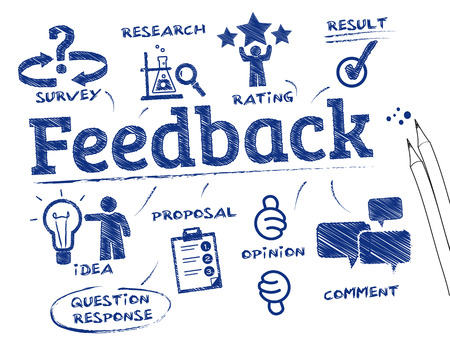“Can I give you some feedback?”
Researchers tell us that the reaction in our body upon hearing those words are like the body’s reaction upon hearing the noise of a possible intruder entering our bedroom in the dead of night.
Yet, strangely enough, the workplace is all a-buzz with the power of feedback.
Even though hearing the word “feedback” may make us tense up, research is clear that receiving feedback is a gift which holds the power to increase our effectiveness in the workplace. To increase our effectiveness, we need to know how our actions and behaviors impact others.
Think of feedback, and the stress that receiving feedback might evoke, like drinking a glass of water. We need water to refresh our body, we need feedback to refresh our effectiveness. Without a good healthy drink of water regularly, we will become dehydrated and not function at our best. Without good healthy doses of feedback, we will not function at our best either!
So, how do we ensure feedback isn’t a stressful, scary experience, such as an intruder coming into our house, but rather a tool we can use to increase our positive impact like drinking a thirst-quenching glass of water?
- Seek Calm –Moving is best to get blood back flowing to your brain as your stress may have ignited the fight/flight internal switch. If your brain is on guard and stressed, the conversation will not be productive. It’s okay to say, upon hearing the word feedback, “Right now is not a good time. Can we schedule something later?” By being in control of your brain, you will be able to listen and be open to what the conveyer of feedback has to say.
- Breathe –Moving will also help you remember to breathe. To think clearly, we need oxygen. A simple 4-square breathing pattern will help you do just that. Breathe in for four seconds, hold for four seconds, exhale for four seconds, rest for four seconds. Keep repeating until you are feeling calm and can think clearly.
- Don’t take it personally. Remember that the information is from the perspective of one person. If the person is acting as a spokesperson for many, you may want to verify that the others are impacted in the same way. If the bearer of the message uses all or nothing verbiage such as, “you never do . . .you always..” or doesn’t use “I” statements, and is only pointing to what you do wrong, it is time to use logic and emotion.
- Use Logic and Emotion– If your mind starts dismissing the input or racing to “awfulizing” the situation, connect with both the emotional and the logical sides of your brain. Name your emotions to tame them and consider sharing how you are feeling about the opinion. Too many times we do not admit that we received a complement. Or, at the other end of the spectrum, we tell ourselves not to feel hurt or angry if the message was hurtful. Then think logically about the message. Remember that feedback isn’t to be one-way monologue. Ask clarifying questions. Ask for specific details so you can either do more of what is working well or plan to address what isn’t. What part of the message is true from your perspective?
Next time you hear the word “feedback”, calm down, take a deep breath, don’t take it personally, and use both sides of the brain – logic and emotion – to fully process the information being provided. These four tips are sure to bring the feedback around to produce brilliant results.

